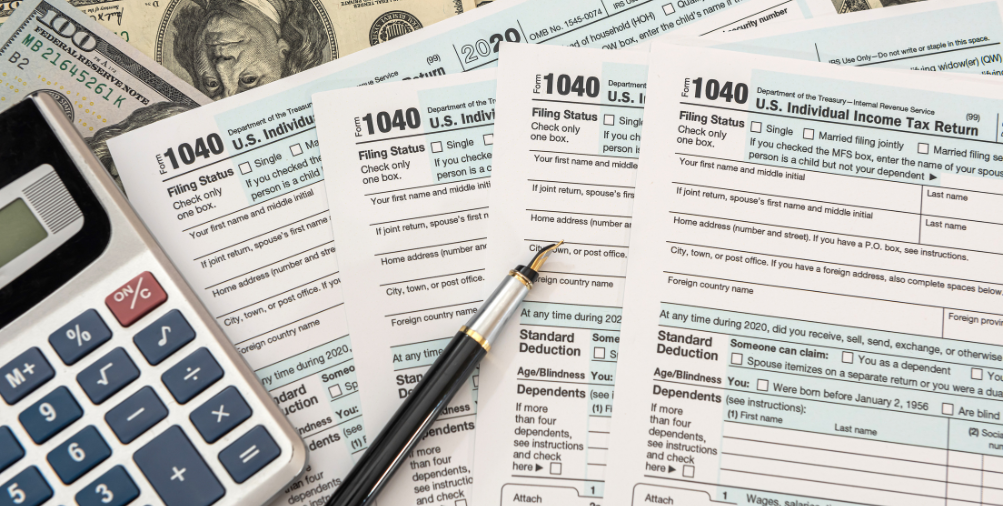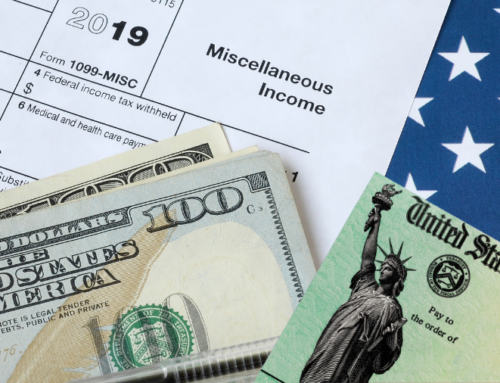The federal government in the US finalizes tax brackets to determine the tax rates for individuals, corporations, and trusts according to their annual income.
The Internal Revenue Service (IRS) annually modifies more than 60 taxes for inflation rates. These adjustments will impact taxpayers during their tax filing in 2026.
Federal retirees derive their income from multiple sources including Social Security benefits, pensions, thrift savings plans, and investment withdrawals. The taxes are treated differently for each of these retirement income sources.
Individual income tax is the largest source of tax revenue in the US.
Overview of IRS Tax Brackets in 2025
The IRS determines the tax brackets for eligible candidates. It applies to both people working in the private or government sector in the US. Get a detailed overview of the importance of understanding tax rules for retirees and their impact on taxable income.
Importance of Tax Brackets for Retirees
Find out why retirees must understand the tax brackets –
- Minimize Liabilities – Empower federal employees to reduce income tax from retirement funnels with strategic withdrawals and long-term fund growth.
- Effects on Social Security – The overall income level not only determines the tax bracket but also the taxable part of Social Security benefits.
- Prevent Getting into High Tax Brackets – Unplanned withdrawals from retirement accounts may push retirees into higher tax brackets.
- Plan Better – Empower retirees to make informed decisions regarding fund withdrawals based on the functions and criteria of separate tax brackets.
Impact of Tax Rule Changes on Retirees
Check out how the renewed tax rules and brackets impact the lives of federal retirees in the US –
- Revised tax rates and brackets for federal income tax positions retirees into different thresholds.
- The new thresholds consequently impact how Social Security benefits of federal retirees are taxed.
- Updated tax rules alter how and when retirees withdraw required minimum distributions from different accounts and the related tax deductions from this income source.
- Changed tax rules compel retirees to make adjustments to their medical expense deductions to manage healthcare costs.
Read Also: Applying 4% Rule & Bucket Strategy for TSP Distribution Options
Key Factors Affecting Tax Brackets for Retirees
Navigate through the primary factors that affect the tax brackets for federal retirees –
Sources of Taxable Income
Federal retirees may have multiple retirement accounts that serve as a revenue source. Naturally, most of the income sources are taxable. The notable sources of taxable income include –
- Social Security – Based on the range of income, up to 85% of social security benefits may be taxed for federal employees and retirees.
- Pensions – Based on the pension plans (CSRS or FERS), the income from these sources is taxable.
- Retirement Account Withdrawals – Distributions/withdrawals from traditional IRAs, 401(k)s, and TSPs are considered ordinary income and subject to taxation.
- Investments & Capital Gains – Dividends, earnings, and interests from selling investments are subject to income tax deduction as per its short-term or long-term holding periods.
- Freelance Work – Earnings from jobs after retirement are considered ordinary income and subject to tax deductions.
Taxable vs. Non-Taxable Income
Distinguishing between taxable and non-taxable income helps to make effective retirement planning –
- Taxable sources of income – These include earnings from wages, interests, dividends, retirement account distributions, and taxable parts of Social Security benefits.
- Non-taxable sources of income – Some of the non-taxable sources of income include municipal bond interest, qualified ROTH IRA withdrawals, and payouts from insurance.
Inflation Adjustments for Tax Brackets
Let us check out how the tax rates are modified for inflation adjustments –
- Annual Adjustments – Since the tax brackets are modified according to inflation rates, it indicates higher thresholds for the taxpayers in every bracket in 2025.
- Effects of Adjustments on Retirees – As the cost-of-living adjustments increase, the tax rule modifications may prevent retirees from entering higher tax brackets.
- Standard Deduction Changes – Modified tax rules for inflation adjustments affect standard deductions that reduce the taxable income for retirees who do not itemize deductions.
Insights into 2025 Federal Income Tax Brackets
Explore the IRS tax brackets 2025 chart to identify tax obligations –
Modified Tax Rules in 2025
Get a glimpse into all the tax provision modifications regulated by the IRS in 2025 –
Standard Deductions
- Single taxpayers and married individuals who separately file for taxes in 2025 are subject to a standard deduction of $15,000 in 2025. This is a $400 hike from 2024.
- Married couples filing jointly for taxes will be charged with a standard deduction of $30,000 in 2025. It is a $800 hike from 2024 adjustments.
- Head of a household is subject to standard deductions of $22,500 in 2025 which is a $600 hike from 2024.
Marginal Rates
- Individual taxpayers with income higher than $626,350 fall in the highest tax bracket for 2025 with 37% deductions from their income. Similar tax rates are applied for married couples who jointly file for taxes and have an income of $751,600 in 2025.
- Single taxpayers need to pay 35% taxes for income above $250,525 in 2025. Married couples jointly filing for taxes with an income higher than $501,050 are charged the same tax percentage in 2025.
- Single taxpayers with an income above $197,300 need to pay 32% taxes in 2025. The rates remain the same for married couples filing jointly with an income higher than $394,600.
- Single taxpayers with an income above $103,350 need to pay 24% of taxes in 2025. Married couples who jointly file taxes with a collective income of $206,700 fall in the same tax bracket.
- 22% taxes are charged for single taxpayers with an income above $48,475 in 2025. Similarly, married couples jointly filing for taxes in 2025 with an income above $96,950 fall within the same tax bracket.
- Single taxpayers with an income above $11,925 and married couples jointly filing for taxes with an income above $23,850 in 2025 need to pay 12% taxes.
- Single taxpayers with an income of $11,925 or less along with married couples filing jointly with an income of $23,850 or less in 2025 need to pay 10% taxes.
Alternative Minimum Tax Exemptions
- Unmarried individuals need to pay $88,100 as an exemption amount in 2025. Similarly, married individuals who separately file for taxes are subject to $68,650 in tax exemptions.
- Married couples jointly filing for taxes in 2025 are subject to a tax exemption amount of $137,000.
Earned Credits from Income Tax
- Qualified taxpayers with 3 or more children are subject to an Earned Income Tax Credit amount of $8,046 in 2025.
Qualified Transportation Benefits
- The final amount for qualified transportation fringe benefits and monthly limitation for parking in 2025 is $325 with a hike of $10 from 2024.
Flexible Health Spending Plans
- A $100 hike from $3,200 to $3,300 is noticed in 2025 for limiting employee salary reductions for health flexible spending account contributions.
- Cafeteria plans with the carryover of unused amounts will be increased to $660 from $640 in 2025.
Taxes from Medical Savings Accounts
- Federal employees with self-only coverage plans for medical purposes are subject to annual deductions of $2,850-4,300 in 2025.
- The maximum out-of-pocket expense for medical savings accounts in 2025 is raised to $5,700 from $5,500.
- The annual deductible for family coverage in 2025 has a minimum limit of $5,700 and a maximum of $8,550.
- The family coverage out-of-pocket expense limit for 2025 is $10,500 with a hike of $300 from 2024.
Exclusion of Foreign Earned Income
- The foreign-earned income exclusion in 2025 is set at $130,000 compared to $126,500 in 2024.
Credits from Estate Tax
- Estates of people who pass away in 2025 are subject to a basic exclusion amount of $13,990,000.
Increased Annual Exclusion for Gifts
- The annual exclusion for gifts is raised from $18,000 to $19,000 in 2025.
Credits for Adoption
- The maximum credit allowed to adopt a child with special needs in 2025 is known as the amount of qualified adoption expenses. This is raised to $17,280 from $16,810.
Unchanged Tax Rules in 2025
Get a glimpse into the items that have been indexed for inflation rates but no taxation adjustments are made –
- Personal Exemptions – The Tax Cuts and Jobs Act of 2017 eliminated the provision of personal expenses in 2025.
- Itemized Deductions – No limitations are set for itemized deductions in 2025. It was eliminated with the emergence of the Tax Cuts and Jobs Act of 2017.
- Lifetime Learning Credits – The modified adjusted gross income amount for taxpayers to determine the reduction in their Lifetime Learning Credit as per the Internal Revenue Code has not been modified as per the inflation rate since December 31st, 2020. Furthermore, this credit is phased out for taxpayers with a modified adjusted gross income of more than $80,000.
Read Also: Smart Retirement Strategies for Texas Federal Employees
Comparison of New IRS Tax Brackets (2025 vs. 2024)
Here is a detailed comparison of tax rules for 2024 and 2025 –
Differences in Individual Filing
| Tax Rate | 2024 Income Bracket | 2025 Income Bracket |
|---|---|---|
| 10% | Income of up to $11,600 | An annual income of up to $11,925 |
| 12% | Income between $11,601-$47,150 | A range of income from $11,926-$48,475 |
| 22% | Income range is $47,151-$103,300 | The annual income range is between $48,476-$103,350 |
| 24% | An annual income between $103,301-$197,300 | The income varies between $103,351-$197,300 |
| 32% | The income varies between $197,301-$426,600 | The range of annual income differs between $197,301-$250,525 |
| 35% | An annual income of $426,601-$609,350 | The annual income varies between $250,526-$626,350 |
| 37% | Income of over $609,350 | For income higher than $626,350 |
Differences for Married Couples Joint Filing
| Tax Rate | 2024 Income Bracket | 2025 Income Bracket |
|---|---|---|
| 10% | Has an income of up to $23,200 | The annual income is within $23,850 |
| 12% | Receives annual income between $23,201-$94,300 | The annual income varies between $23,851-$96,950 |
| 22% | Derives annual income varying between $94,301-$206,600 | The income ranges between $96,951-$206,700 |
| 24% | An annual income ranging between $206,601-$394,600 | The income differs between $206,701-$394,600 |
| 32% | Income varies between $394,601-$713,200 | The annual income lies between $394,601-$713,200 |
| 35% | Annual income of $713,201-$731,200 | Derives an annual income between $713,201-$751,600 |
| 37% | Has an annual income above $731,200 | The annual income is more than $751,600 |
Differences for Married Individuals Filing Separately
| Tax Rate | 2024 Income Bracket | 2025 Income Bracket |
|---|---|---|
| 10% | Married individuals with annual income of up to $11,600 | Has an annual income of $11,925 or less |
| 12% | People with an annual income between $11,601-$47,150 | The annual income range is between $11,926-$48,475 |
| 22% | Income range between $47,151-$103,300 | The income range varies between $48,476-$103,350 |
| 24% | Income varies between $103,301-$197,300 | The income differs between $103,351-$197,300 |
| 32% | Income differs between $197,301-$365,600 | The annual income varies between $197,301-$356,600 |
| 35% | The income range is between $356,601-$365,600 | The income ranges between $356,601-$375,800 |
| 37% | The annual income is above $365,600 | The annual income is more than $375,800 |
Head of Households
| Tax Rate | 2024 Income Bracket | 2025 Income Bracket |
|---|---|---|
| 10% | Annual income of up to $17,000 | The income is up to $17,400 |
| 12% | Annual income ranging between $17,001-$64,850 | The income varies between $17,401-$66,150 |
| 22% | The income range is between $64,851-$103,350 | The income differs between $66,151-$103,350 |
| 24% | The income differs between $103,351-$197,300 | The income range is between $103,351-$197,300 |
| 32% | The income varies between $197,301-$426,600 | The income is within $197,301-$426,600 |
| 35% | The income is within $426,601-$609,350 | The income differs between $426,601-$626,350 |
| 37% | The income is more than $609,350 |
The income is more than $626,350 |
Read Also: Maximize Your Federal Benefits with Comprehensive Retirement Planning in California
Overview of the Federal Withholding Tax Table in 2025
The tax withholding estimator highlights how the refunds, take-home payments, and tax dues are affected due to the withholding amount. Most importantly, it empowers employees to choose the withholding amount based on their convenience.
However, people with a nonresident alien status and complex tax situations should avoid this tool.
Importance of Checking Tax Withholding
Glance through the prime reasons to check income tax withholding –
- Protects against unexpected tax bills and penalties in the following year.
- Prevents little tax withholding.
- Allows to adjust withheld tax to receive bigger paychecks and smaller refunds during taxation.
Best Time to Check Tax Withholding
Candidates should check their tax withholding status every year. However, it becomes pivotal if –
- The participant is going through major life changes.
- Switched from federal employment to a private sector, retired, or started a post-retirement paid work.
- Shifted from a lower to a higher income bracket.
- Got married.
- Gave birth or adopted children.
- Purchased a home.
Best Tips To Reduce Taxable Income
All sources of income in the US are subject to income tax deductions by the federal government, state government, and local governments.
Try online federal income tax rate calculators to determine your taxable income for 2025. Simply add a few details such as gross income, location, and filing status to derive accurate tax estimates.
Explore the top strategies to reduce taxable income in 2025 –
Make Retirement Account Contributions
Allows participants to lower their taxable income through pre-tax contributions into retirement accounts such as the 401(k0, traditional IRA, and TSP accounts. Keep a note of the contribution limits for each of the retirement accounts to make the most of every retirement plan.
Make Health Savings Account Contributions
Contribute the maximum amount every year into Health Savings Accounts to lower the taxable income bracket. HSAs contributions are done on a pre-tax basis allowing the funds to grow tax-free and make tax-exempted withdrawals too.
Make Flexible Spending Account Contributions
Lower the taxable income bracket with pre-tax contributions into the flexible spending accounts. Moreover, these funds can be withdrawn without tax deductions for specific medical and dental expenses.
Tax Deduction Advantages
The tax deductions lower the adjusted gross income along with income taxes. Participants can choose between the standard deduction and itemized deduction options.
Bottomline
Tax brackets impact the well-being and financial security of retirees. Getting insights related to different income sources helps to identify the existing tax benefits. This way, employees and retirees may minimize their tax liabilities and preserve their savings for the future.
Every retiree has complex and unique financial requirements. Consult with the best federal retirement advisors to navigate through different tax rules, develop personalized strategies, optimize withdrawals, and plan distributions effectively. Other than this, it enables retirees to take full advantage of tax credits.
As the tax rules change annually based on inflation adjustments, staying informed empowers candidates to make the most of their retirement income and reduce taxable income considerably.
PSR Assurance offers federal government employee retirement planning in Puerto Rico to overcome complex tax challenges and secure the financial status for retirement.




